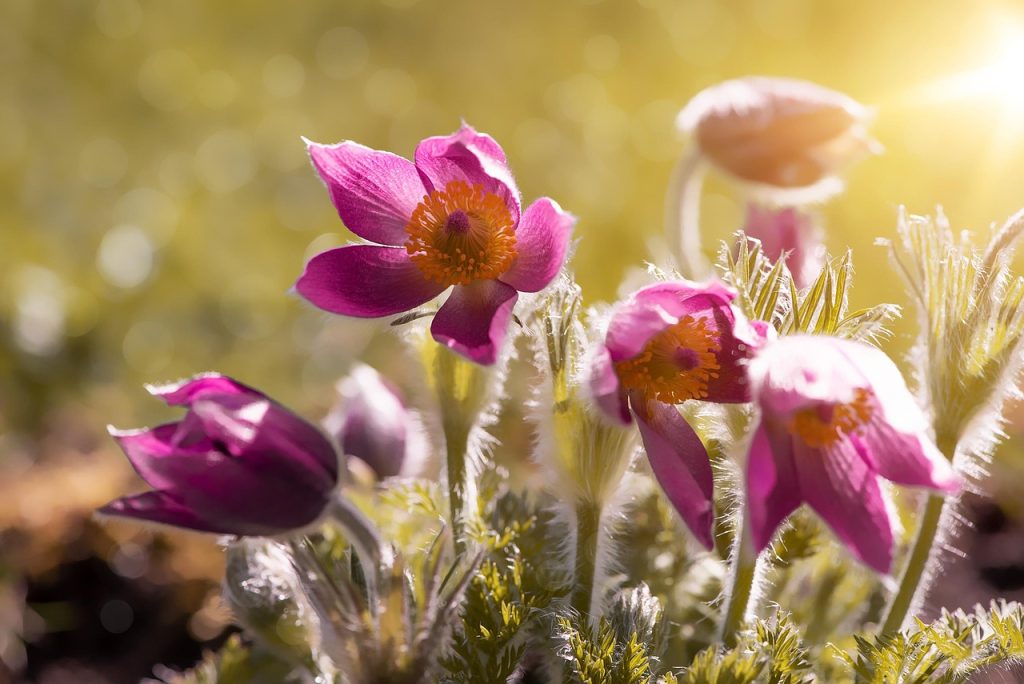Gardening is a labor of love that changes with the seasons. Each turn of the calendar brings new challenges and opportunities to enrich your garden. Whether you’re a seasoned green thumb or a budding gardener, understanding the seasonal needs of your plants can transform your garden into a vibrant, flourishing space year-round. In this guide, we’ll explore essential tips to keep your garden thriving through the shifting seasons.
Spring: Awakening Your Garden
Spring is a season of new beginnings. As the cold retreats, your garden awakens with a burst of activity. This is a critical time for setting the tone for the rest of the year.

Prepping the Soil
After winter, the first step is to rejuvenate your garden’s soil. It’s likely compacted and low on nutrients. Begin by gently turning the soil with a spade or fork, being careful not to harm any emerging bulbs or roots. Incorporate a generous amount of organic compost or well-rotted manure to replenish nutrients. This will provide a rich, fertile foundation that will support plant growth throughout the year.
Planting Early Bloomers and Vegetables
Spring is ideal for planting frost-tolerant flowers like pansies and snapdragons, which can handle a few chilly nights. Additionally, consider vegetables like lettuce, peas, and spinach, which thrive in the cool but bright conditions of spring. Starting your vegetables early can lead to a bountiful early summer harvest.
Pruning and Maintenance
Pruning is essential in early spring to help shape your plants and remove any dead or diseased branches. This encourages healthier, more robust growth. Shrubs that bloom in summer benefit the most from spring pruning because it spurs new growth that will flower in the coming months.
Summer: Nurturing Growth and Vitality
Summer brings heat and long days, which can stress plants but also encourage rapid growth.
Watering Wisely
Effective watering is crucial during hot, dry spells. Water deeply and infrequently to encourage roots to grow deeper into the soil, seeking moisture. The best time for watering is early in the morning, which reduces evaporation and helps prevent fungal diseases by allowing the foliage to dry out during the day.
Supporting and Protecting Plants
As plants grow, they may need additional support. Use stakes and ties to help heavy-laden fruit branches and tall flowers stand strong. Also, keep an eye out for pests and diseases. Natural remedies like neem oil or insecticidal soap can be effective against pests without harming the beneficial insects that help your garden.
Continuous Harvesting and Deadheading
Regular harvesting encourages more production, especially in vegetable gardens. For flowers, deadheading (removing spent blooms) promotes more blooms and extends the flowering period.
Fall: Preparing for Dormancy
Autumn is a time of preparation for the colder months. It’s about protection and planning ahead.
Cleaning up and Planting Bulbs
Clear away fallen leaves and debris, which can harbor pests and diseases over winter. It’s also the perfect time to plant bulbs such as tulips and daffodils, which will lie dormant over winter and burst into life come spring.
Adding Mulch and Protecting Vulnerable Plants
Applying a layer of mulch after the first frost helps to insulate the soil, preserving moisture and protecting roots from temperature fluctuations. For particularly tender plants, consider using frost cloths or burlap wraps to shield them from early frosts.
Winter: Resting and Planning
Winter is less about active gardening and more about planning and protection.
Protecting Plants from Extreme Cold
Continuing to protect vulnerable plants is crucial in winter. Ensure mulches are intact, and burlap protections are secure. This is also a great time to repair and paint fences, sheds, and trellises, which can be harder to get to when your garden is in full bloom.
Indoor Gardening and Preparation
Turn your attention indoors. Houseplants can bring greenery and growth into your home even when it’s frosty outside. Also, winter is the perfect time to plan your garden for the next year. Research plants, sketch out garden designs, and order seeds in preparation for the spring.
Conclusion: Year-Round Garden Care
Maintaining a garden through the seasons requires foresight and flexibility. Each season holds unique tasks that help prepare your garden for the next phase of its life cycle. By staying proactive and responsive to the weather and your plants’ needs, you can ensure a healthy, beautiful garden all year round.
FAQs
What is the best way to water plants in the summer to conserve water and ensure plant health?
Water deeply and less frequently, ideally in the early morning. This encourages roots to grow deeper, making plants more drought-tolerant and reducing water waste.
How can I protect my garden from frost in the fall and winter?
Apply a thick layer of mulch to insulate the soil and use frost cloths or burlap to protect sensitive plants from freezing temperatures.
Are there any specific soil amendments recommended for spring garden preparation?
Incorporate organic compost or well-rotted manure to replenish nutrients depleted by winter weather. This will help kickstart your garden’s growth as the temperatures rise.